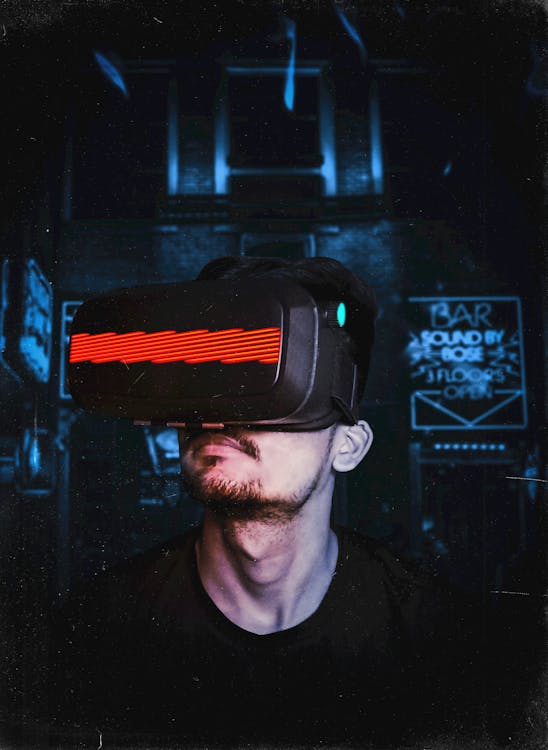Spanish Level 3- Activities Designed for Online Instruction
🧑💻 Spanish Level 3, Activity 04: Technology in the Future/ La tecnología en el futuro (Online)

Products: Technology, social media, mobile devices
Practices: Taking turns guessing, working together in groups
Perspectives: What are the advantages and disadvantages of technology and social media?
World-Readiness Standards:
- “Standard 1.1 Students engage in conversations, provide and obtain information, express feelings and emotions, and exchange opinions.”
- “Standard 1.2 Students understand and interpret spoken and written Spanish on a variety of topics.”
- “Standard 1.3 Students present information, concepts, and ideas in Spanish to an audience of listeners or readers on a variety of topics.”
Idaho State World Language Standards:
- COMM 1.1 – Interact and negotiate meaning (spoken, signed, written conversation) to share information, reactions, feelings, and opinions
- COMM 3.1 – Present information, concepts, and ideas to inform, explain, persuade, and narrate on a variety of topics using appropriate media in the target language.
- COMM 2.1 – Understand, interpret, and analyze what is heard, read, or viewed on a variety of topics.
NCSSFL-ACTFL Can-Do Statements:
- I can describe and discuss popular technology or forms of social media
- I can brainstorm resolutions to problems
- I can access information about technology and cars in the target culture
Materials Needed:
Would you like to make changes to the materials?
Access the template(s) below:
Need help with customizing the templates? View this video for help.
Warm- Up
- Begin by introducing the Can-Dos for today’s activity and displaying the Google slideshow on the projector.
Hola, ¿cómo están? Estoy ____. Vamos a empezar el lab de hoy con los can-do statements. - Students will get in pairs and answer a few questions to begin a conversation on topics related to the main activity:
1. ¿Qué se tiene que hacer para mantener un carro? (What do you need to do to maintain a car?)
2. ¿Con qué frecuencia se necesita hacer? (How frequently would it have to be done?)
3. ¿Con qué frecuencia lo haces en realidad? (ejemplos: el servicio al automovíl, cambiar el aceite, hacerle rotación a las llantas) (How frequently do you do it in reality? (Examples: car service, change the oil, rotate the tires)
Main Activity
- Give students the link to the student presentation and ask them to click on the click under “Vamos a Jugar.”
- Put the students into breakout rooms in groups of 2-3. One person will describe the word on the card, and the other members of the group will try to guess what the word is.
Para empezar vamos a formar grupos de 2 a 3 personas. Una persona describirá la palabra en la tarjeta y los otros intentarán adivinar cuál es la palabra.
- An example of step 2: if they draw the word Wi-Fi, the “describers” could say, “It’s something you log into on your phone, so you don’t need to use data”
Por ejemplo si tienen la palabra WiFi, los ‘describiradores’ pueden decir “Es lo que usas para que no tengan que usar tu datos cuando estás en el internet.” - We will have a timer for one minute. After, the describers become the ‘guessers’ become the ‘describers’
Vamos a tener un cronómetro por un minuto. Después, la persona que describe va a adivinar y otra persona va a describir - Explain some rules of the game:
Hay algunas reglas para este juego: no se puede decir en voz alta la palabra que está en la tarjeta y no pueden usar nombres de marcas famosas (como iPhone, Android, etc) - Have students continue playing as long as time allows.
Wrap-Up
Ask students the following questions to finish the activity:
¿Qué tipo de tecnología usas todos los días? (What type of technology do you use every day?)
¿Qué tecnología nunca usas? (What technology do you never use?)
¿Qué problemas encuentras con la tecnología? (What problems do you have with technology?)
End of Activity
- Read Can-Do statements once more and have students evaluate their confidence. (Use thumbs up/thumbs down or download our student cards.)
- Encourage students to be honest in their self-evaluation.
- Pay attention, and try to use feedback for future activities!
NCSSFL-ACTFL Can-Do Statements:
I can describe and discuss popular technology or forms of social media
I can brainstorm a resolution to problems
I can access information about technology and cars in the target culture
CULTURAL NOTES:
- Famous Hispanic inventions
- “Quiénes son los 20 latinos más influyentes en el mundo tecnológico en Estados Unidos”
How to Revise or Remix a Pathways Project Activity
Feeling creative? The Pathways Project needs your help in revising and remixing activities for the K-16 language classroom.
Try taking an activity to the next level by:
- Add new content (something you’ve created or another OER source)
- Contribute additional activity suggestions
- Integrate authentic materials such as videos, infographics, photos, etc.
- Suggest how to implement the activity in the classroom
- Customize the content for a specific audience or group of learners (for example, K-5 learners or to differentiate for student’s needs)

